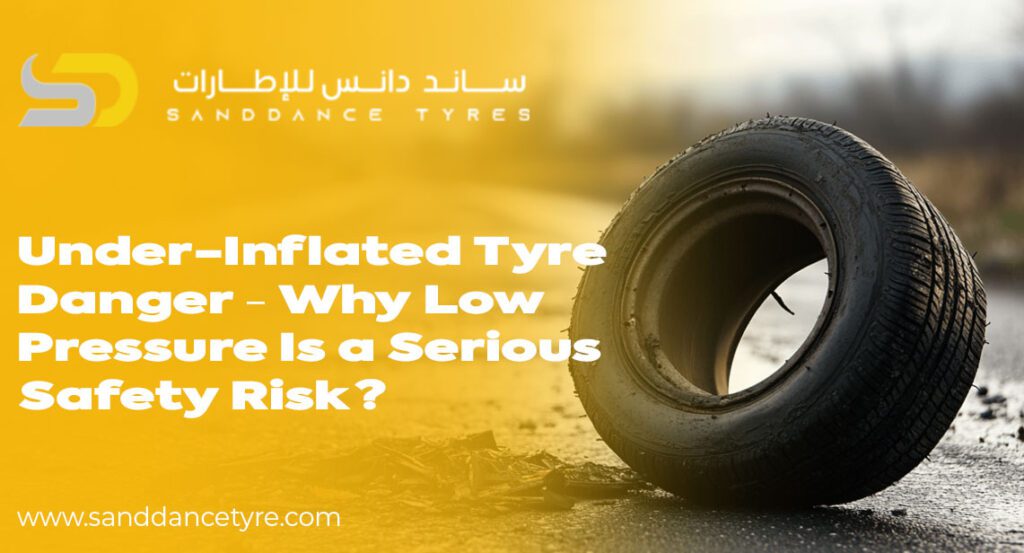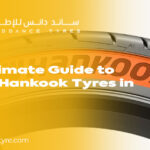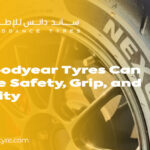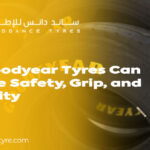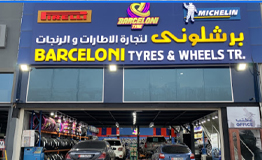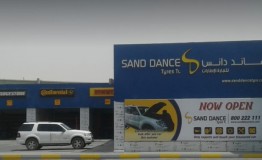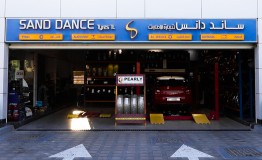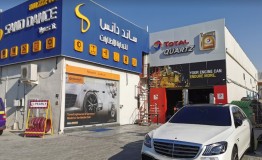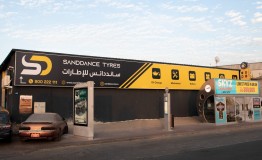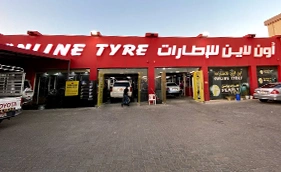Many drivers put off addressing the issue of under-inflated tyre danger, which they think is a small thing. What they don’t know is that running on low tire pressure puts you at a great risk of having an accident, tire failure, and also incurs large repair bills. Tires are meant to perform within a certain pressure range, and out of that range, they do not perform; in fact, their life span and safety are reduced. Drivers who value the safety and efficiency of their vehicles must educate themselves on the issues related to under-inflated tires.
The Science Behind Under-Inflated Tyre Danger
Tyres depend on air pressure for their shape, support of the vehicle’s weight, and for even contact with the road surface. As air pressure goes below the recommended level, the tyre becomes softer, which in turn increases the surface area that touches the road. This causes great friction, which in turn leads to overheating, faster wear of the tread, and reduced fuel efficiency. In the UAE, the under-inflated tyre danger is particularly high as hot road surfaces aggravate these issues, which in turn increases the risk of sudden blowouts.
Low Pressure Tyre Risk and Its Impact on Vehicle Control
One issue that is not enough of a concern in low-pressure tire risk is the issue of handling and braking. We see that under-inflated tyres do not react as quickly to steering input, which in turn makes it hard to handle the car in emergencies. Also, the decreased stiffness of the tire side walls, which in some cases may cause the side wall to fail during sharp turns or when the car is loaded with a heavy weight. This may cause the tire to fail out of the blue, which puts the driver and passenger in danger.
The Connection Between Under-Inflation, Overheating, and Tyre Failure
When a tire is run flat of air, the extra flex of the rubber produces heat, which in turn causes the tire to overheat. This heat buildup weakens the tire’s internal structure, thus making it more of a blowout risk. In some severe cases, constant heating may cause the tire tread to separate from the tire body. In the UAE’s high-temperature climate, even short drives with low tire pressure may cause serious damage, which is a very much a daily issue. We see this as a very important reason to do regular pressure checks.
Preventing Under-Inflated Tyre Danger Through Regular Maintenance
Proactive care of your tires is the best way to avoid issues of under-inflated tyre danger. You should check tire pressure often, which in turn will keep them at the factory-recommended levels, which you can find in your vehicle’s manual or on the driver’s side door frame. Also, it is important to check tire pressure when the tires are cold, which means before you have been driving them for a while, as the heat from the drive will raise the reading and give you a false report. At regular intervals, bring your car in for a professional tire inspection, which will catch slow leaks, damage to valves, or other issues that cause low pressure.
Conclusion
The issue of under-inflated tyre danger is far greater than a minor issue; it is a large-scale safety issue that causes poor handling, tire blowouts, and large repair bills. To form of it is an issue which we ignore at our peril. At Sand Dance Tyre, we put our expertise to use in providing tire inspection and maintenance services to car owners in the UAE, which in turn helps our customers to achieve optimal tire pressure and, in turn, the best in safety on the road. By making pressure checks a routine thing, you not only see to the wear and tear of your tires but also do what is in your power to prevent accidents that may have been avoided.
FAQs
1. How frequently should I check my tyre pressure?
It is a good idea to check tire pressure at least once a month and before long trips in hot climates like that of the UAE.
2. Can poor tire inflation affect my fuel consumption?
Yes, low pressure increases rolling resistance, which in turn puts more demand on the engine and in the process reduces fuel efficiency.
3. What are the greatest risks of driving on under-inflated tyre danger?
The worst outcome is a sudden blowout, which may result in loss of control and serious accidents.


